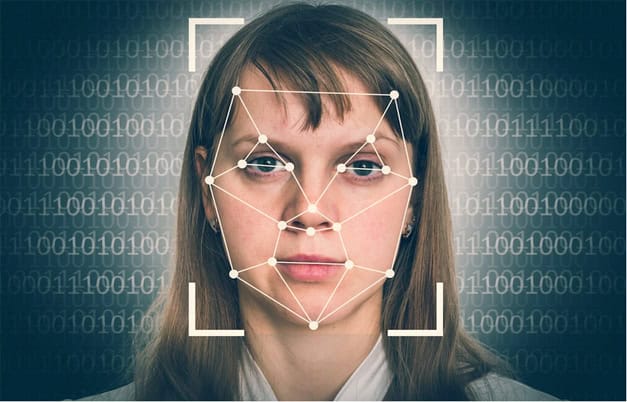
The rapid development of artificial intelligence has enabled deepfake technology to become increasingly advanced, thus creating considerable security and ethical dilemmas. Business operators need active deployment of deepfake protection systems to fight against online threats and identity fraud while combating false information spread. The paper examines AI deepfake operation mechanisms while showing actual deepfake attack cases and providing guidance for identifying and stopping these malicious activities.
Understanding AI Deepfake Technology and Deepfake Detection
Deepfakes employ deep learning algorithms, specifically generative adversarial networks (GANs), to create manipulations that imitate human subjects correctly. The AI-produced fakes function as tools to carry out criminal actions through executive impersonations and information misrepresentation while creating false multimedia material.
The evolution of fake detection systems exists to face these growing threats. Deepfake detection systems analyze digital content through software that tracks heartbeat patterns and detects artificial voice synthesis and facial inconsistencies in the images. Deepfake techniques developed through AI continue to progress so cybercriminals discover ways around detection systems that lead to the need for constant development of deepfake detection techniques available online.
Notable Deepfake Attack Cases and the Role of Deepfake Detection Software
Deepfake technology has already inflicted substantial harm to organizations through both financial losses and damage to reputations. Here are some prominent examples:
- 2019 CEO Voice Spoofing Scam: The attack used artificial intelligence voice replica technology to trick the company’s CEO role into transferring $243,000 through an employee to an illegitimate account.
- 2021 Banking Fraud: The criminals achieved $35 million in unauthorized bank transfers through deepfake technology that forged an executive’s company voice to trick the bank manager.
- Political and Social Manipulation: Deepfake technology enables the Spamouflage organization to manufacture artificial social media profiles, which then distribute false information that misleads public perception.
What these situations reveal is the immediate necessity for organizations and individuals to establish comprehensive programs against deepfake prevention in order to protect themselves from AI-based scams.
How to Use Deepfake Detection Technology to Identify Manipulated Content
The evolution of deepfake technology creates difficulty for people to detect this manipulated content. Several signs help experts detect artificial changes in content, including these factors:
- Facial Inconsistencies: Visual abnormalities occur when face features stand improperly and expressions between video frames mismatch with each other.
- Eye and Blink Patterns: Blinking that is uneven or eye movements that seem unnatural.
- Skin and Lighting Anomalies: Unsteady skin textures and fake-looking shadows.
- Lip Sync Errors: The presence of different movements when someone speaks, together with abnormal vocal delivery patterns.
- Audio Irregularities: The voice sounds robotic while the voice structure contains both abnormal inflections and misaligned mouth motion.
Using deepfake detection software to analyze digital content enhances accuracy through abnormal detection methods. Computer forensic tools validate modifications through analysis of hidden metadata.
Best Practices for Deepfake Prevention and AI Deepfake Security
Security breaches stemming from deepfake activities need proactive measures both in businesses and among individual users to avoid them. Here are some effective strategies:
1. Implement Multi-Factor Authentication (MFA) for Deepfake Prevention
The verification process, which extends to several authentication methods, helps businesses lower their vulnerability to deepfake impersonations. Security measures receive an enhancement when organizations implement voice-recognition alongside facial-authentication systems and behavioral-biometric detection methods.
2. Educate Employees and Stakeholders on Deepfake Detection Online
The organization should organize recurring training sessions to teach workers to detect deepfake security threats. Recognition programs should both explain deepfake technology dangers and provide instructions for deepfake manipulation detection.
3. Leverage Advanced Deepfake Detection Software
Adopting AI-powered deepfake detection systems as online tools enables organizations to find deepfake threats immediately, followed by response procedures. Additional defense capabilities emerge through using biometric analysis with AI-enhanced verification technologies in security systems.
4. Establish Strict Verification Protocols Using Deepfake Detection Technology
Developing stringent verification procedures for transactions, video communications, and sensitive data exchanges can prevent fraud. Businesses should implement callback verification methods for high-value transactions.
5. Monitor Digital Content for Manipulation with AI Deepfake Tools
Using reverse image searches and metadata analysis can help find altered content. Organizations should work with providers of deepfake detection technology to stay informed about new threats.
The Future of Deepfake Attacks and Deepfake Detection Online
Deepfake technology keeps improving, which allows its misuse to increase further. Cybercriminals presently exploit deepfake tools to break through security protocols while creating damaging fraudulent material that appears entirely genuine. Deepfake prevention and detection methods need effective execution through combined action between technology vendors, government institutions, and companies.
C2PA functions by building certification requirements that organizations use to validate content authenticity. Large technology companies, including Adobe and Microsoft, together with other corporations, produce detection software for identifying alterations in photographic and video content.
Deepfake prevention requires constant innovation along with collaboration efforts and public awareness to remain effective against changing security threats. Organizations and individuals can safeguard themselves better against rising deepfake threats by using best practices and AI-based detection systems in combination with current deepfake technology updates.



